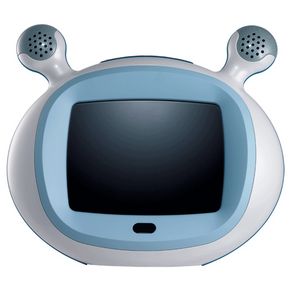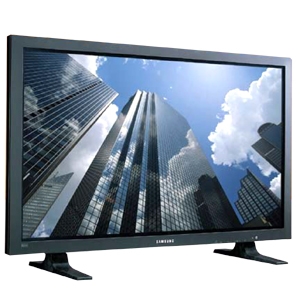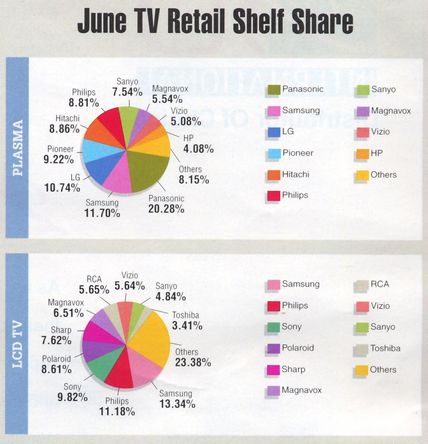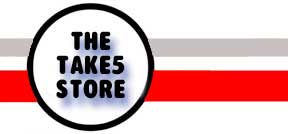Buying an HDTV: Plasma vs LCD vs DLP vs LCOS (Holiday 2007 Update)
Buying a TV was once a simple endeavor. You decided how much you wanted to pay and then how big of set you wanted. You basically paid for what you got. A brand name with a nicer tube would cost a bit more or if wanted a bigger TV, it would cost more.

Those days are gone.
Then came HD … well, technically, first came ED which tried to pass itself off as HD.
So, that’s your first acronym of many to keep an eye out on.
Many years ago, ED was a fine choice but as most channels are converting to HD – don’t bother with ED which is really just a nicer analog TV signal but not much more than that.
If you want technical details on everything, you can explore further. This is really just intended as a general buying guide to cut through the clutter. They are a lot of specs that will be thrown at you and some if not most of it is subjective plus a little manufacturing voodoo as one number from one manufacturer will mean something and another from someone else might mean something else – you frankly have to go and look at actual picture quality … and really, really look. Look at the text and look at the transition from scene to scene even if they are running a demo disc – you can see differences. Keep in mind that they want to showcase the best possible picture quality but if you look closely, you can see anomalies on one set that is not on another set – extra softness (more blurred) in some instances. Again, there are no hard or fast firm rules.
How you intend to mount or place the TV will play a part into your equation also. Obviously width is a consideration but budget for wall brackets and perhaps professional installation if you want to wall mount it – and of course, it’ll look much better if the wires are in the wall and not outside the wall (add $).
Also, make sure you get the set into your house or where you want it.

The first question is
PLASMA versus LCD versus DLP
… also versus a new projection (that is a combo of LCD & DLP) called LCOS.
Already, I can hear silent weeping in the background.
Here are some generalities and there are no hard and firm answers – if there were, it would easy and there wouldn’t be all the choices on the market. The good thing is you can’t really go wrong and in a place/store with no sales, you do tend to get what you pay for … however, with sales & rebates and the fact you are committing $1+k makes you want to make a great & perfect decision. Um, yea, good luck with that.
And that’s the hard part. It is like buying a car now, narrow down your choices, research and then go price or service hunting.
First, unless you want high end projection (100″ wall space available anyone?), let’s put LCOS aside for now.
So, it’s really PLASMA versus LCD versus DLP.
Again, these are generalities …
Larger than about 42″, plasma will tend to be less costly (actually there aren’t many plasma under 42″ now).
DLP sets are a swoosh brighter than LCD though plasma generally is much brighter.
Plasmas offer slightly wider viewing angles if you have a large brood.
Most seem to agree that when it comes to black contrast (deeper color blacks), plasma tends to be the the darkest black, followed by DLP and then LCD.
Though in overall warmth, many people believe LCD’s are better than DLP’s though plasma tends to offer a picture scenario most like “old analog” TV. However, if you measure in terms of sharpness and clarity, LCD tends to be the best.
DLP have replaceable bulbs which seem to burn out faster than plasma or LCD so after 5-6 years, DLP may end up costing you more (some manufacturers recommend replacing the bulb after 2,000 hours while plasma & LCD’s can go up to 50,000 hours before it gets less and less bright). Newer DLP’s don’t offer bulb replacement which is presumably a good thing depending on how many hours they project bulb life to be and do the math.
Some cheaper and older LCD’s have a slower screen response rate so during some fast action, there can be the appearance of a blur & delay … and even with the newer LCD, it’s something to watch out for so make sure you seen it literally in action … though anything under 40″ LCD shouldn’t be problem … this is a problem not normally associated with plasma. The newest LCD sets have a refresh rate of 120 MHz so look for that spec somewhere.
DLP sets tend to be bulkier and very few wall mounting versions (if any? DLP is really like an mini projection TV to get right down to it). Both plasma and LCD offer wall mounted versions).
LCD’s are alledged to use the least amount of power. Some manufacturer website will offer you power specs so again you can do that math … and you can also look for the ENERGY STAR label. (link to Energy Star’s .Gov Website) though apparently ratings are for the TV on standby mode … when does having a TV in screensaver mode considered watching TV? According to the WSJ, a 40″ plasma will consume more electricity than a refridgerator so if that’s a consideration, read the WSJ article which appears to be free and available with no log-in.
Plasmas do have a greater tendency for image retention – if want to leave your set to CNBC or ESPN News with their 24 hour crawl underneath, you might want to get an LCD instead. If you don’t plan on leaving a channel like that on for hours on end day after day, plasma is fine.
Again, no hard or fast firm rules and of course, no obvious choice.
THE NUMBERS
When it comes to specs, besides the size of the screen, there are some notable ones normally shown as: 1,024×768, 1,280×720, 1,366×768, or 1,920×1,080. The higher the number, the more pixels there are on the screen – the more detailing so in theory, the higher the better …
Plasma tends to top out at 1,366×768 with many lower end models in the 1,024×768 range though at the largest size and the costliest end, you can find 1,920×1,080 plasma.
These can also be shown as 720p, 768p or 1080p (P standing for “progressive” which will get to a little later.
High end LCD’s tend to 1,920×1,080 so in theory, an LCD offers more pixels and more details.
The reality is between 1,366×768 (768p) and 1,920×1,080 (1080p) while one appears to be a much greater number – is there that wide of a gulf of difference? In math yes, to the naked human eye? Maybe. Maybe not. Or more importantly, what is the cost difference? Is $2k worth the difference, $1k? $500?
Part of it is your source material. Fox HD, ABC HD & ESPN HD broadcasts in 720p. NBC, CBS, Discovery and PBS broadcasts in 1080i (I for “interlaced” – again – covered below). AND just as crucially – how you receive your signals. Right now, Dish & DirecTV compress the signal at a higher rate than Comcast cable (I have Comcast so I cannot speak for the other cable companies) though DirecTV is about to launch new satellites and a promise of 150 HD channels in September so things could get better … or worse. If you going to get your HD channels (well, the local ones) over the air, it is plausible you will be getting the full strength signal of 1080i but if you have cable or satellite, you might be getting a compressed signal anyway (DirecTV is not willing to admit they compress anything but they do) … do you have a HD or Blu Ray DVD player? Or an Xbox 360 or Sony Playstation 3? (Xbox & PS3 are 1080p in theory – theory being that there are no games in 1080p yet). AS of December 2007, only three networks claim to broadcast 100% of their programming in 1080i – HDNet, Universal HD & Mojo.
The “i” or “p” stands for how the lines are drawn/presented on the screen – either interlaced or progressive. Instead of a tedious description, if you want to read more, go to Wikipedia but 1080p is considered the ultimate of the ultimate HD (for now). Is 1080p better than 1080i – in theory. In actuality – no one can say for absolute certainty. There is the belief that 1080i is better for sports as frames can be drawn with less blurring but in reality – maybe if you had an 100″ set, you could tell but just as with 720p v 1080p – what is it worth to you? It’s like the difference between 500 horsepower and 520 horsepower. If you think it’s worth it – great. Because you could easily argue that whatever speed you can attain with 520 horses, you can get pretty damn close with 500 horses – enough to really tell the difference without a speedometer?
1080p will cost you more – if you have the means, no reason not to get 1080p but after cable or satellite compression, after putting it front of the family room with the Sun setting behind it … it’s just a number.
If you want to do more reading on compression and video codecs, MultiChannel News (a trade publication to the television broadcast industry) has a read that summarizes why there’s no feasible way to send uncompressed signals.
Though the larger the set, the more reason you do want to go with 1080 – if you stand in front of 70″ TV set, the average person can tell that 1080 is “better looking” than 720 …
For what it’s worth, LCD now holds 70% of the market – partially because while plasma was first to the 40-50″ arena, it was more difficult for plasma to attain 1080p which LCD was able to get there faster for the 40-50.” Plasma loses its pricing advantage when it comes to 1080p. One reason why plasma is going up to the 70″ marketplace but of course, at that price, the margins are higher and there’s less competition but overall, of course, there are much fewer people looking for a 70″ set – especially in 5-figure range.
RESPONSE RATE
A more critical factor in older or off-brand LCD’s – particularly 40″ or more. There was a delay limitation causing a slightly blurring in sports or action sequences. Most high end LCD sets now have a response rate of 6ms-8ms (this is also important for gamers) which is good enough. There are some smaller computer LCD’s with rates as low as 3ms but none yet for larger LCD’s as TV’s. If you decided on a plasma, you can ignore this as it “draws” and sends the images differently but if you’re going with LCD, check the response rate – the newest LCD’s (and ones that cost a bit) have the 120 MHz refresh rate spec.
DYNAMIC CONTRAST RATIO
In theory important as the higher the ratio the better like some claim 10,000:1 but it might mean they measured it with the TV off – so the numbers don’t really mean anything. Some claim that anything above like 1,400:1 is a lie so perhaps if you reduce whatever number they list by a factor of 10 … or in reality, since we have no real idea how their measurement is seen in real life (it’s suppose to measure how deep and rich the blacks are represented), but in real world conditions, the numbers are essentially meaningless but from a major manufacturer, you can at least presume the higher the ratio the better and compare made up apples to made up apples.
CONNECTORS
The more HDMI inputs and HD component video inputs the better.
Some LCD sets also have DVI inputs if you want to plug in a computer.
TUNER
If you live in a valley like me, whether it comes with a tuner or not is not all that important since without a dish or cable, I get pretty much nothing but if you can receive over the air HD local channels, you definitely want a tuner. HD tuners are listed as ATSC.
QAM tuners allow you to watch unscrambled cable channels (without a cable box)
Some TV’s have Cablecard slots which can be a nice way to go. Instead of paying an extra $10 to $15 a month for an HD converter, all you need is a cablecard from your cable company. By law, they HAVE TO supply you with one – most cost around $2 a month. The only downside is you do NOT get PPV or VOD but it’s a nice way to get the features of an HD converter box without paying as much.
OTHER NUMBERS
Yes, there are other numbers they will throw at you but the really are sort of ‘you get what you pay for’ numbers – if you’re paying $4k for a set, again, in every reputable place, that means the comb filter and other components that affect a picture quality will be better (in addition to the specs I cited earlier) so some you can look and weigh such as power consumption but others like pixel pitch or brightness numbers might be the truth, a little fudge or in some lab setting that has no real life equal. That’s not to say, you can spend much more time exploring and understanding all that but in 99.9% of the case, the less obvious stuff is definitely, ‘you get what you pay for.’
If you can find power consumption numbers, you can weigh the cost in electricity.
AUDIO
Of course, Dolby 5.1 (or better) are important but since you can bypass and supplement with your other AV equipment, it’s listed here as a consideration but for most people, not necessarily a deal breaker.
SUMMARY
There is still one constant – unless you are shopping at Al’s TV Barn off the swamp and behind the bog, you generally do get what you pay for.
Personally, I think DLP leaves too much up in the air with its possible bulb changing requirements – maybe even in the first years of usage (anywhere from 2,000 to 8,000 hours) versus 50,000 or more for most LCD or plasma screens. You can do the math on how much TV you watch and whether you mind the additional $200 to $400 for a bulb … though you could argue for $200, you have a set that’s nearly as bright as when you bought it after you put in a new bulb … so it’s your call. Also note – some are designed to be swapped out by anyone – others require a technician – check to be sure! And of course, will you be able to get at it once your TV is positioned?
If you decide on a non major brand – check your warranty coverage and perhaps choose a credit card that extends that. Do a search on that brand and see what pops up. I know a friend who had a chip go out after 3 years and if you do a search on that brand, up pops up other people complaining about the chip going out also. It’s was $300 for the repair so also weigh that against an extended warranty. If it doesn’t break in 30 days, it’s probably going to last another 2-3 years (at least hopefully) which the extended warranty might expire anyway so decide if it’s better just to spend $300 in 3 years when you need it versus spending $300 on a warranty during the best years of the TV anyway …
If you want anything under 40″, LCD is pretty much your only choice since plasma is not cost competitive there and they have pretty much given up … between 41″ and 50″ is the most competitive marketplace now so you will see the widest swings in price and sales (where you see “2nd tier” or even 3rd tier names) – above 51″ however, are where the big name manufacturers really make money and there’s not as much expertise from the non-big names so prices are more stable and of course, more expensive since there’s less competition.
Then decide if the cost difference between 720p and 1080p is worth it to you.
Make sure there are enough connectors and of course, can you get it into your house?
Everything I’ve noted can be argued both ways and then another 7 ways so no one is right nor wrong. Just decide what size you want and then your budget.
Here is the latest JD power rankings: LCD, 37-49″ and 50-65″.
The flat out best deal on an HDMI cable (from Apple) $19.95 (I’ve seen these selling for $100!).
There’s plenty more reading you can do – especially on the web – just be sure and look at the date – anything from 2006 or older is pretty much out of date. If you are interested in the high end, be sure and check out PERFECT VISION mag. I think they are the best – a nice blend of being spec geeks (testing kelvin temperature) but also realizing that people actually watch TV (many other high end geek mags just seem test the specs and make judgments on that). The offer the new issue as free PDF download plus they also have a AV database – though it’s best to look up specific models versus just random searching.
PROGRAMMING
I think most everyone knows by now but note – when you buy a HD TV, you get exactly ZERO HD channels even if the channel says ESPN HD. If you have a regular cable or satellite box and are not paying extra for the HD package, you are getting plain old old-school SD.
You must upgrade to an HD box to get actual HD.
For people who can get over-the-air reception, you can get an HD antenna to pull in your local stations who are broadcasting in full HD for “free.” The CEA has a map that seems to pretty accurate as to what channels you should be able to pull off the air.
As for choices from cable or satellite? Of course it varies depending on where you live and who your cable provider is. Comcast seems to be the leader when it comes to cable HD with a solid selection of national cable channels (in addition to your local channels) for just the price of an HD converter box over your regular service. Comcast is also very strong in the VIDEO ON DEMAND (VOD) service with lots “free” HD programming ready to view anytime. At the other end, old Adelphia customers are just emerging from bankruptcy and have poor choices. Dish seems to offer the most channels on HD (though not much on demand) though along with channels you’d recognize, you’re also getting channels like KungFu HD. DirecTV has finally added a slew of HD channels. Right now, I’m still sorting through the offers (could they be more confusing) but now DirecTV may be in the lead or a solid alternative to cable.
NEXT
We live in an era where there is no end. While you might stride the Earth with your fancy 1,920 by 1,080p set … they are working on 7,680 × 4,320 … yea, ultra HD so don’t be thinking you have bragging rights for long even if have a 72″ Samsung LCD or Panasonic’s 103″ Plasma that is bigger than 4-40″ plasma’s … (only $70k).
So keep that in mind while shopping. There is always better and cheaper tomorrow so don’t get carried away.

If you prefer to know where your choice stands – market share wise, here are June 2007 numbers:

Once you get your set, be sure and check out the what CONNECTORS TO USE GUIDE.







